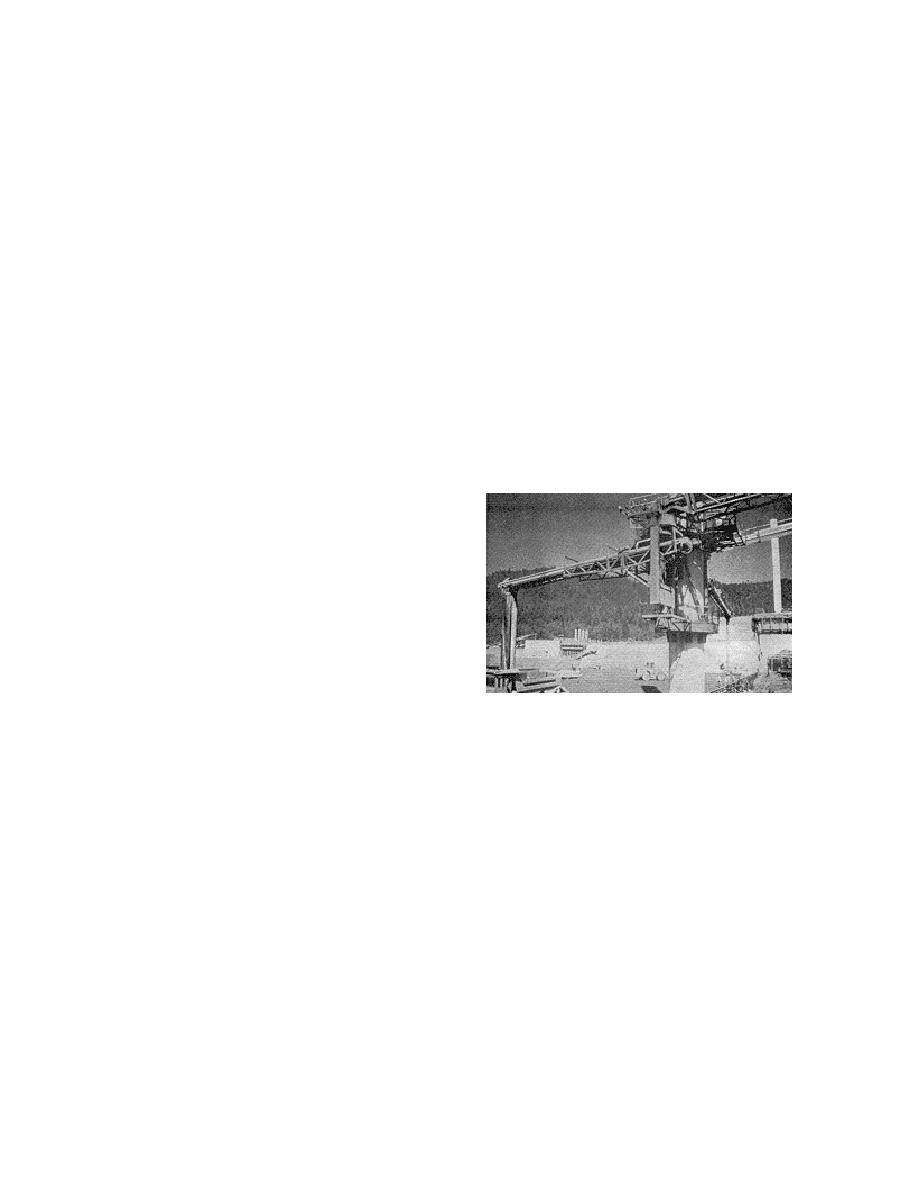
ETL 1110-2-343
31 May 93
h. Anisotropic effects. Tests on RCC cores
(1) In-place properties are highly dependent on
indicate the direction of drilling may affect test
field quality control.
results. Strength tests on several RCC projects
indicate that in some cases, cores drilled vertically
(2) The layered construction method can result
yield higher strengths than companion horizontally
in poor bond, low tensile strengths, and high perme-
drilled cores (similar to conventional concrete),
ability as a result of incomplete consolidation, con-
whereas in other cases the opposite result has been
tamination and/or drying of the lift joint surfaces.
observed. For conventional concrete, the anisotrop-
b. RCC placement procedures. Segregation
ic behavior is usually attributed to accumulation of
bleed water. For RCC, the observed anisotropic
and improper construction techniques may result in
behavior may be due to the distribution and orienta-
poor bonding at the lift joints, increased water seep-
tion of aggregate particles resulting from spreading
age, decreased strength, and lower overall density of
and compacting the individual RCC layers. The
the in-place RCC. The procedures used during
degrees of consolidation and segregation will also
spreading of the RCC layers are critical for achiev-
have an effect. The orientation of cores can influ-
ing a uniform and non-segregated RCC placement.
ence tensile strength results by as much as 20 per-
One method that has been used to successfully
cent. If tensile strength is of structural importance,
place the RCC begins by constructing a working
drilled cores of both vertical and horizontal orienta-
pad of RCC large enough for subsequent RCC to be
tion should be tested.
dumped and worked by the dozer. Figure 1-4
shows RCC being transported to a placement site.
6. Construction Methods and Features
a. General. RCC is usually transported by
truck or conveyor belt and deposited in piles or
windrows at the placement site. The RCC is then
spread in layers with dozers and consolidated with
vibratory rollers. Due to the stiff no-slump consis-
tency of the RCC, all or most of the form work and
associated labor required for conventional mass
concrete can be eliminated. There is little or no
accumulation of surface water by bleeding; conse-
quently, the removal of laitance at lift surfaces is
not required as with conventional concrete. There-
fore, the RCC construction method offers potential
Figure 1-4. Transporting RCC
cost advantages over conventionally placed concrete
due to:
RCC can be transported to the placement site by
belt conveyer, by conventional batch haul methods,
(1) Higher production rate.
or by a combination of both. Conventional haul
methods include end dump trucks, scrapers and
(2) Reduced lift surface cleanup and preparation.
bottom dumps. Care must be taken to assure that
transportation vehicles do not track dirt or mud onto
(3) Reduced labor for conventional formwork.
the RCC placement, and that segregation does not
occur prior to final compaction of the RCC.
(4) More efficient equipment utilization for
placement and consolidation.
RCC is then placed on the working pad, leveled,
and spread into place by the dozer at the leading
Adequate bond and watertightness at the lift joints
edge of the pad in approximately 6-in.-thick tapered
between successive RCC layers is critical for struc-
layers. The dozers work continuously spreading the
tural integrity. Good quality aggregates, good
RCC so that all surfaces of the RCC layers receive
workability and compaction effort, and the use of
at least two passes of the dozer. In this manner, the
bedding mortar are required to obtain adequate bond
RCC will be nearly completely consolidated by the
strength at the joint. In general, the disadvantages
action of the dozers. Areas of segregation are
of RCC construction are that:
1-5



 Previous Page
Previous Page
